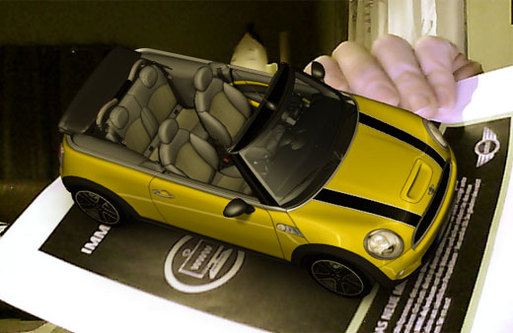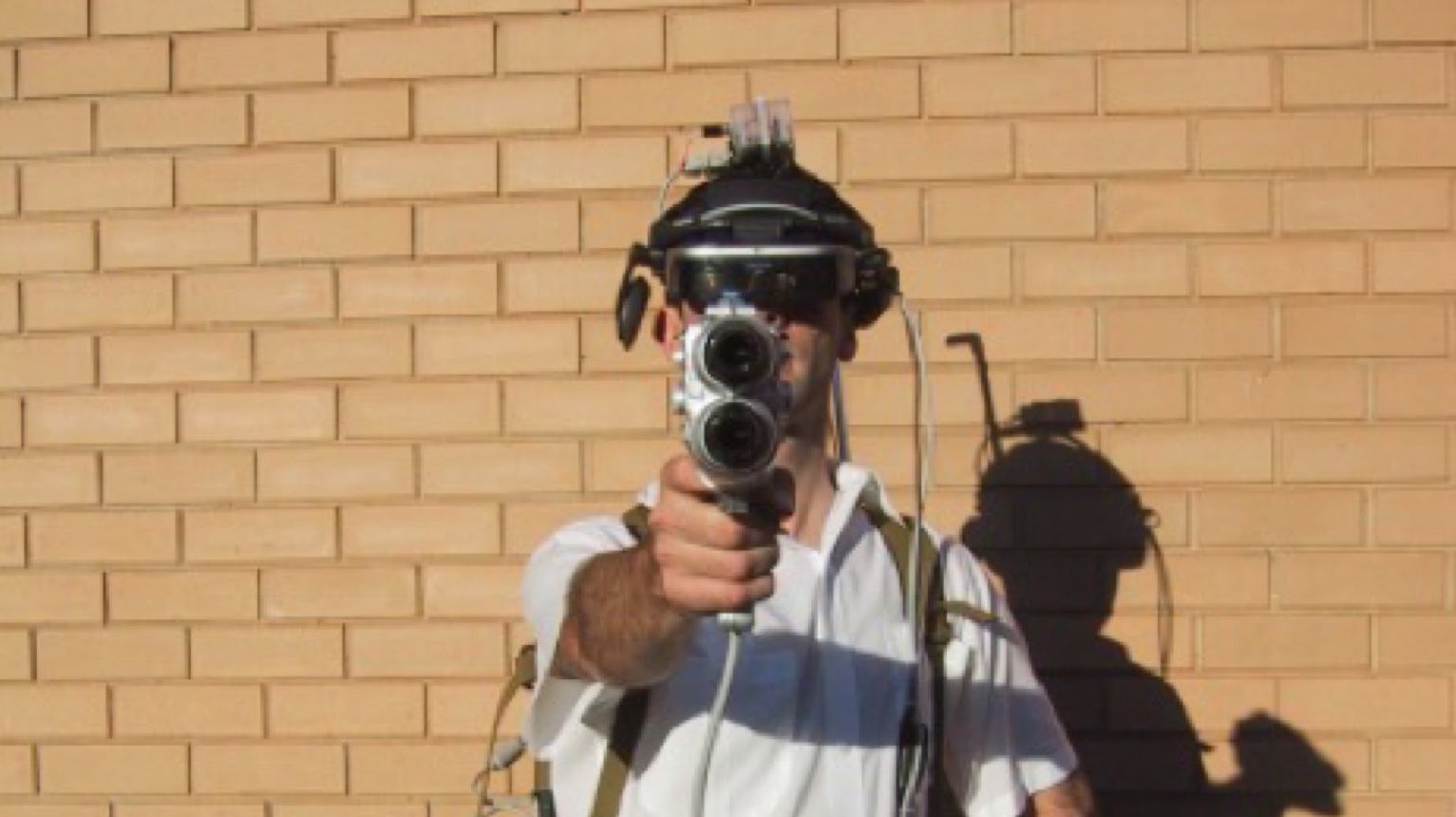
Augmented Reality (AR), has been widely democratized since the beginning of 2018. Yet, this word was first used back in the 90s and has continued, slowly but surely its democratization, thanks to the tenacity of a few inspired developers and creatives.
In this article, we dive into the year 2008, which marks an important turning point in the use of AR for advertising, we then will see how this opened the way for greater adoption of AR as a marketing and advertising tool. We will also talk about the elements necessary to the development of the technology as well as how it is shaping the future of advertising.
2008: An ad that marks a turning point
The 2008 augmented reality ad by Mini Cooper was the first time that a brand used this technology for promotional purposes on a print advertisement, in conjunction with the launch of the new Mini Cooper convertible in Germany.
Readers of German car magazines - Werben & Verkaufen and Autobild - may remember this ad. On the 4th cover of the magazine, the reader sees a page presenting a new car from the manufacturer Mini, but without any picture of this car! The title says: "The World Premiere in your hand". In this advertisement, 3 pictograms and a little text explain that with an internet connection and a webcam, the new convertible can appear in 3D in front of their eyes, on their computer screen.
To better understand this ad, we must first talk a little about the agencies behind it. Buzzin Monkey GmbH and die agentour GmbH have been featured in the Animago Award, Ads Of The World, Digitalbuzz, Gizmodo and Technabob for this realization.
Stefan Becker, Managing Director of Buzzin Monkey GmbH explains why the agency decided to work on this ad: "I discovered this technology at the beginning of 2008 and started doing some tests to see what was really possible. Once I understood the technical aspect, the marketing opportunities seemed huge! So together with die agentour we pitched an AR concept to their client MINI Germany. The right brand for such an edgy innovation. I had already worked for MINI, so it was natural for me to propose this innovative idea to them, which corresponded well to their image. That was the beginning of the Buzzin Monkey GmbH agency and it was a great start!"
From 2D to 3D, this ad is absolutely incredible for its time. It is truly interactive, as moving the magazine synchronizes the car so you can see it from all angles. The use of marker technology in the world of advertising is a great first. Without a QR code, this system allows to film the paper sheet to display the 3D representation of the car on the screen. A second layer is added to reality, it is the principle of AR, applied to advertising.

Democratization of AR as a marketing & advertising tool
It is important to know that the development of augmented reality is intimately linked to the massive use of smartphones with integrated cameras. 2008 was a great year for cell phones, especially with the release of the Apple iPhone 3G, but the presence of cameras was still very anecdotal and there was little knowledge of AR on the part of readers.
Buzzin Monkey GmbH and die agentour GmBH quickly realized that, given the technological context of the time, the best solution for Mini Cooper was to propose the use of the webcam. Indeed, in 2008, webcams were democratized as standard in computers and therefore represented the best option for AR.
There's no doubt about it: conceiving this ad at the end of the 2000s was a truly avant-garde idea on the part of the manufacturer. The impact of this campaign was immediate: it reached several million people. The readers who tried it were really impressed. The project was widely publicized in the press and on television. The media presence of Mini Cooper was really boosted in Germany thanks to this publicity.
This Mini Cooper ad opened the field of possibilities and the excitement generated by this first foray into AR in advertising has been emulated: since 2015 or 2016, more and more augmented reality ads are emerging. The automotive, luxury and fashion sectors are quite pioneers in the field, and AR has been able to establish itself there to offer a real added value to the user experience.

Today, brands use augmented reality to present their new products to the general public, to offer virtual and immersive try-ons, or to improve the user experience when shopping online. Dior, for example, used AR to augment a physical gift bag over Christmas time last year, while Cartier offers in its virtual showroom the possibility to display 3D bags in various colours thanks to AR.

Augmented reality: a staple in the advertising strategy
This explosion of AR in advertising is largely linked to the maturity of users with regard to this technology, but also to the availability for developers of powerful tools (ARkit, ARcore, or even Adobe Aero) to create augmented reality scenarios without limits, and to the development of platforms like Snapchat that have democratized the use of this technology.
Teads, the global media platform which empowers publishers with technology for video advertising, is beginning to use Augmented Reality (AR) ads. Their ad content will allow users to try on fashion items, change product features and be redirected to the online shop. This seamless and frictionless ad experience announces a new era for advertising with AR becoming a staple in the marketing mix for most major brands, and for good reason: augmented reality is expected to generate 2000 billion dollars in advertising revenues this year alone.

The use of augmented reality is increasingly requested by agencies and advertisers, as they see it as a great opportunity to communicate in a more creative and immersive way with their audience while boosting the virality of their campaigns. Brands can use the interactive nature of AR to invite their audiences to immerse themselves in their brand’s story. And because the user is in control of the interaction with the AR experience, the emotional connection and brand recall are even greater.
The uses and opportunities for AR advertising are extremely varied: from product launches, events, virtual clothing fittings, tutorials & training - AR ads allow for creative storytelling, sales promotion, functional experiences and brand awareness.
From 2008 to 2022, augmented reality has experienced an impressive development, driven by technical innovations and the growing attraction of users for this technology. From a crazy idea in 2008, augmented reality advertising has become one of the most powerful communication tools for a brand.
Since 2012, Atomic Digital Design supports companies on the path to augmented reality, to imagine immersive advertising experiences and activations on social networks such as Snapchat, Facebook/Instagram or TikTok but also the web. To learn more about our AR and interactive solutions, please contact our team, we would love to hear more from you.
Stay tuned about augmented reality innovations.
Subscribe to our AR/VR/Web3 Insights
newsletter on LinkedIn

.webp)




